The largest and main temple on the island is the Temple of Isis, "started under Ptolemy II Philadelphus (285-247 B. C.) and completed in all its essential details by Ptolemy III Euergetes I (247-221 B. C.) Its decoration, both inscriptions and reliefs, proceeded gradually" (Kamil 71). The Temple of Isis: angle view; side view, frontal view with courtyard and colonnades |
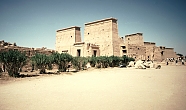
|

|
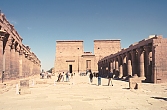
|
| |
|
At the southern end of the western colonnade (far left), the oldest temple in the complex still exists--or at least the vestibule to this temple. This is the so-called Pavilion of Nektanebo I with elegant bell columns and Hathor capitals. This small building has screen walls between the columns (originally 14), crowned with a uraeus frieze and Nektanebo making offerings to the gods.The western colonnade with the Pavilion of Nektanebo at the southern end; the Pavilion; detail of Hathor capital |
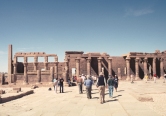
|
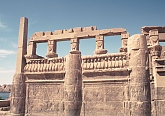
|
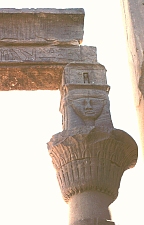 |
| |
|
The courtyard before the temple is 100 meters long, flanked by two colonnades, the one on the west (left) with 32 columns, the one on the east (right) unfinished. The western portico follows the shoreline. Although all the column capitals are different (with floral motifs), the shafts depict scenes of offerings to the gods. The western colonnade
|
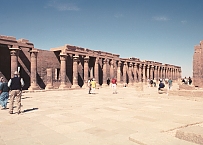
|

|

|
| |
|
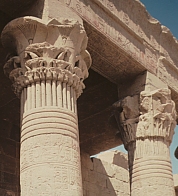
|
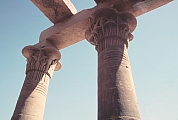
|
Details of the western colonnade |


 Click here to go to the Egypt Index.
Click here to go to the Egypt Index. Click here to return to index of art historical sites.
Click here to return to index of art historical sites.
 Click here to return to index of artists and architects.
Click here to return to index of artists and architects.
 Click here to return to chronological index.
Click here to return to chronological index.
 Click here to see the home page of Bluffton College.
Click here to see the home page of Bluffton College.
